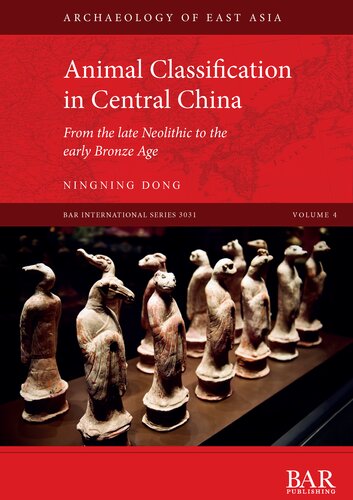

Most ebook files are in PDF format, so you can easily read them using various software such as Foxit Reader or directly on the Google Chrome browser.
Some ebook files are released by publishers in other formats such as .awz, .mobi, .epub, .fb2, etc. You may need to install specific software to read these formats on mobile/PC, such as Calibre.
Please read the tutorial at this link: https://ebookbell.com/faq
We offer FREE conversion to the popular formats you request; however, this may take some time. Therefore, right after payment, please email us, and we will try to provide the service as quickly as possible.
For some exceptional file formats or broken links (if any), please refrain from opening any disputes. Instead, email us first, and we will try to assist within a maximum of 6 hours.
EbookBell Team

4.4
82 reviewsThis monograph uses an archaeological approach to decipher folk classification of animals in ancient societies. Ningning Dong collates faunal data from three late Neolithic and early Bronze Age sites in central China and integrates multiple lines of evidence. The analyses demonstrate a folk taxonomy remarkably different from the Linnaean system. The results show that age might have served as a critical categorical filter, particularly in ritual contexts, and that the wild/domesticated dichotomy was established no earlier than the Shang dynasty. This perceptual distinction is unlikely to have been synchronised with the initial occurrence of domestication in the early Neolithic. Animal categories constituted a vital part of a broader classificatory scheme that concerned the organisation of the cosmos as a whole. This book enriches our understanding of animal categories in ancient China and further discusses the tension between etics and emics, language and action, domestic and wild.